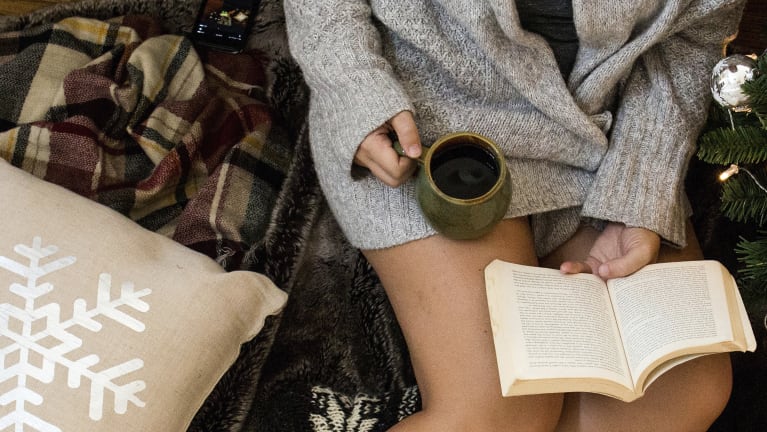It's Friday night. I'm ready for some gripping drama and a good tub of ice cream.
I'm reclining on my sofa in front of Netflix. Wafts of vanilla circle the room from my scented candle and the mood lighting is set to cosy.
“It is about being with the people we love. A feeling of home. A feeling we are safe.”
Tonight, I'm practicing hygge. Originating in Denmark, hygge isn't an easily translatable word. It means something like "coziness" and encourages indulgences for pleasure. It was the hot lifestyle trend of 2016, but snuggling up at home never goes out of fashion.
"Hygge is about an atmosphere and an experience, rather than about things," explains Meik Wiking, in the introduction to his book The Little Book of Hygge. "It is about being with the people we love. A feeling of home. A feeling that we are safe, that we are shielded from the world and allow ourselves to let our guard down."
Sydney psychologist Vanessa Fudge is familiar with hygge, having grown up with a Danish stepfather.
"My stepfather initiated many rituals into our family that encouraged us to take time out together, to explore the beauty of nature and to relish life and relax," she says.
One particular family ritual was driving two hours to another part of Sydney to buy what became known as "Danish breakfast". She says, "I salivate each time I recall the way that fresh bread and pastry smelt in the car and how hard it was not to dive in en route, but that would have detracted from the hygge."
And hygge is all about taking your time. According to leading mental health specialist Pedro Diaz, slowing down and appreciating what's nice in our lives – the core principles of hygge – can have a powerfully healthy and positive effect.
"You don't even have to be unwell to benefit, it can have a great preventative effect, too," he says. "Hygge has similar core processes to mindfulness and gratitude, and both have antidepressant and anti-anxiety effects." Gratitude, in particular, has been found to build the neural pathways that make it easier to experience positivity.
So how can we implement hygge across all areas of our lives? Diaz says that it's about finding what really works for you in each situation.
For example, when it comes to a job, some people love being out and about, so working from a coffee shop would be ideal. For those who love the office life, though, this wouldn't be hygge.
If you struggle with the nine-to-five toil, you may need a job that offers more flexibility, and if you work better from a standing desk as opposed to sitting, consider this change, too. "It's all about more than one way of getting things done," Diaz says. "Managers can help with this by implementing changes that offer staff options."
Practicing hygge at work is also about changing our focus on "what's next" to appreciating the good we encounter, and enjoying the time we spend there. "Stop to recognise the small things, whether it be a lovely walk into the office, a smile or a pleasant conversation with a colleague," Diaz recommends.
It's a similar story when it comes to our personal lives. Life and couples coach Vicki Lanini says that a relationship based on gratitude is a healthy relationship.
"Many couples are now embracing this lifestyle, and focusing on the positives in their relationship rather than the negatives," she says. To incorporate hygge into this part of your life, Lanini recommends setting alarms on your phone to remind you to stop and think about what you've loved and been grateful for that day. Logging this in a daily journal and sharing this with your partner will lead to more happiness.
"People like making other people happy and, when they know how, they will do more of it," she says.
Source: Read Full Article

